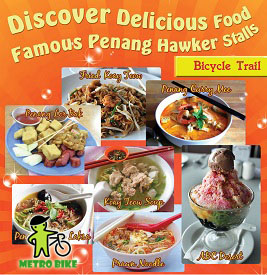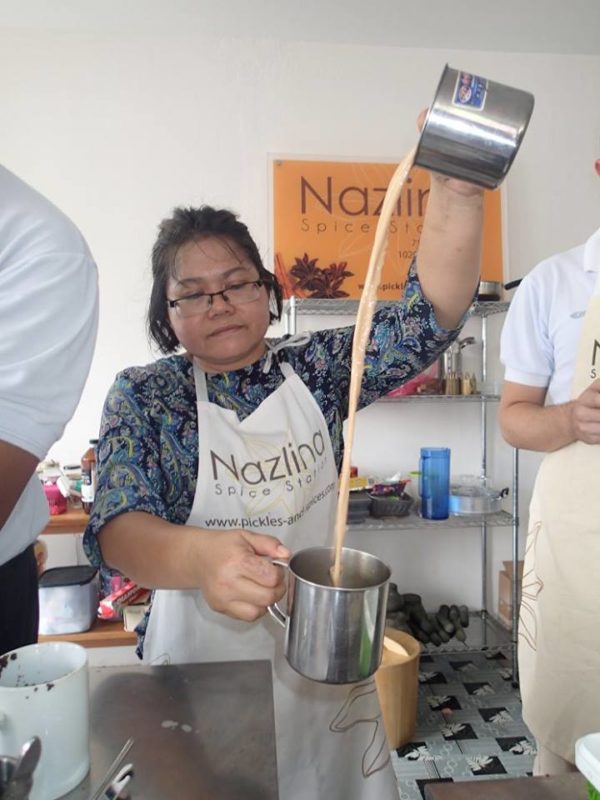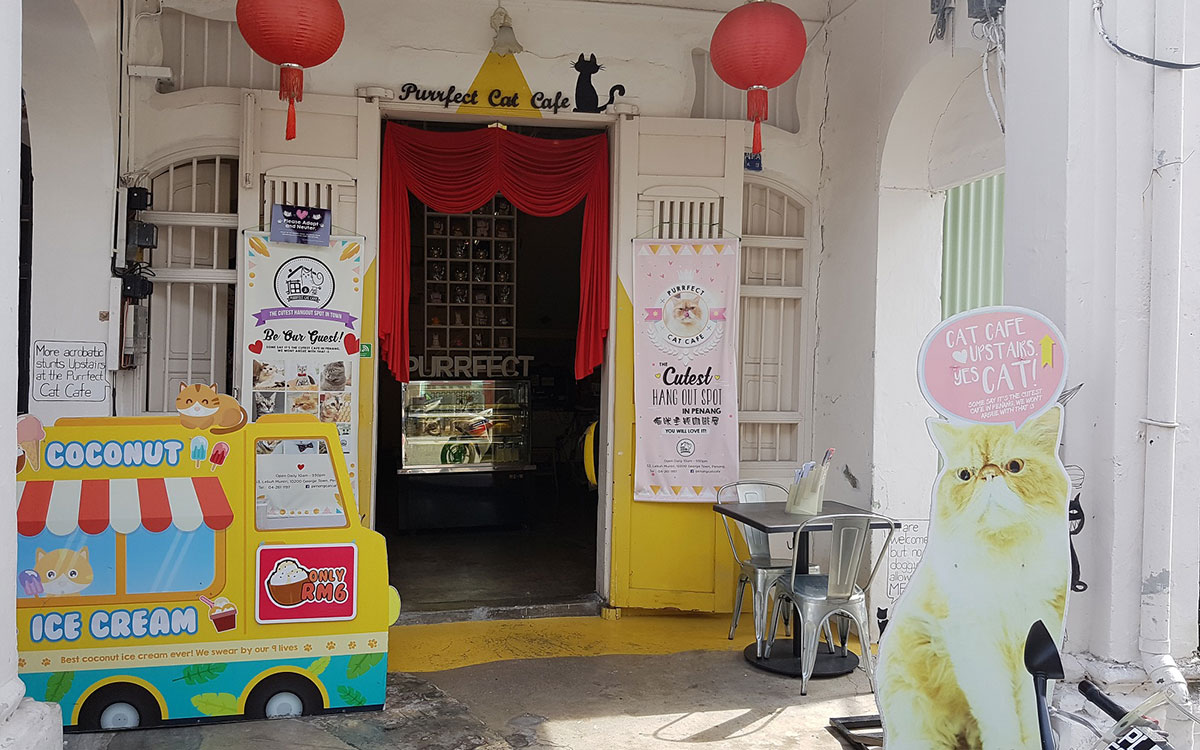Contributed by Fergus T. Maclaren
President, International Council on Monuments and Sites (ICOMOS) International Cultural Tourism Committee / Principal, MAC-DUFF Tourism ● Heritage ● Planning
Sudah makan? and Jiak pa buay? are common local greetings (Bahasa Malaysia and Hokkienese) in Penang for ‘Have you eaten yet?’. Much like asking ‘How are you doing’, as being fed implies that one is doing well.
In the past five years, Penang cuisine has been named as one of the top street food destinations by CNN Travel and the top global foodie destination by Lonely Planet. At the forefront of Penang’s street food scene is its capital city, George Town, a UNESCO World Heritage Site recognized for its cultural and historical significance. Amidst George Town’s historic shophouse and colonial architecture, steaming bowls of nasi lemak, laksa and breakfast favourite char kway teow are served up at local hawker (street food) stalls.
This al fresco culinary culture resonates throughout the Malaysian peninsula and Singapore. There’s many reasons to love hawker food. Not only is the cuisine quick, tasty and cheap, but it also makes for an exciting culinary experience. Simply walking down the street will make your mouth water, as pungent and spicy aromas from the braziers and grills waft through the air. It’s an opportunity to spend time with friends and family

outdoors, providing a fresh air escape from the humid indoors. There’s also a little theatre involved, with stall staff calling out to passerbys to come and eat, and rituals like the elaborate jug to cup transfer of teh tarik (condensed milk sweetened, pulled tea).

The basis of this fabulous hawker food comes from Penang’s origins as one of the world’s first fusion cuisines. A history of contact and intermarriage on the island since the 15th century resulted in a culinary style known as Baba-Nonya (referring to male-female relationships of different ethnic backgrounds) or Peranakan cooking. It implies a blend of Chinese, Malay, Thai, Indonesian, Indian, and European influences and cooking methods. Regional ingredients such as lemongrass, coconut milk, turmeric, pandan leaves, fresh chilli and different sambals (very spicy condiments made with different chilis) provide a heady, fragrant base for many traditional dishes.
Despite this enthusiasm for traditional fare prepared in a time-honoured manner, there are challenges facing Penang food stalls. Many of the hawkers from the post-World War II era are retiring after working up to 60 years in the business. Young people who grew up assisting their parents are now less inclined to spend long hours preparing ingredients and then sweating outdoors over hot, charcoal-fired cookers, for low pay.
There are also a wider variety of cuisines becoming increasingly available in George Town. Fast food chain outlets are popping up around the heritage zone, serving visitors and residents alike. Traditional coffee shops known as ‘kopi tiam’ are becoming displaced by more western-oriented competitors. There is even a ‘cat café’, where feline fanciers can enjoy a latte, espresso, or some concoction called a ‘catpurrchino’ with up to ten of the Bengal breed roaming about.

Local planning and tourism authorities have tried to reverse this trend by formalizing hawker stalls into indoor, air-conditioned enclaves, and creating high profile events. The recent 2nd Annual Penang Street Food Festival saw over 100 vendors serving mouthwatering traditional dishes to hungry audiences in the heritage heart of George Town. The event had a cultural nod to local history this year, incorporating 1970s era decor such as wooden blinds and traditional food covers on the streetside venues.
A nascent Penang Slow Food Movement is emerging to retrench the values and support behind local cuisine. Founded in Italy by Carlo Petrini in the 1980s, Slow Food has evolved from ‘defending regional traditions, good food, gastronomic pleasures and a slow pace of life’ to ’embracing a comprehensive approach to food that recognizes the strong connections between plate, planet, people, politics and culture’. Taste, authenticity of ingredients, and time to properly enjoy the food is important. It is also important to recognize the cultural and environmental connections between food, people and tradition, just as Penang has done so over the past four hundred years.
Cultural Tourism Tips
While Penang is still celebrated for its unique food culture, there are ways in which you can support local traditional food purveyors and enjoy a great, tasty and inexpensive meal:
- Take a break from the big yellow ‘M’ or Colonel and be adventurous. Street food is seen as being safe, as is the ice in drinks you’ll need to cool off the heat on your tastebuds.
- Don’t become obsessed with visiting the most popular hawker stalls recommended by Yelp, TripAdvisor or local online food guides. These places are often very busy and there are hidden gems everywhere to discover, which can often be pointed out by locals working at guest houses or hotels where travellers are staying.
- Recognize some dishes are more readily available and fresher at certain times of day than others. Roti canai (South Indian flatbread with a curry accompaniment) is more of a breakfast dish, while laksa (spicy noodle soup) is often consumed as an afternoon snack.
- Feel free to try a variety of flavours and dishes. A gathering of hawker stalls allows you to try a range of inexpensive local specialties.
- Be prepared to pay with a small batch of currency, as every stall gets paid separately, and they operate on a mostly cash transaction basis.
- Travel with a local food tour group that can introduce novice foodies to prominent hawker venues in George Town and provide guidance on the history and taste influences of different dishes. TripAdvisor list 41 tours for every interest, taste and timeframe.
- Bring the flavours of Penang home. Cooking classes start with a trip to the local market to identify and describe appropriate ingredients and their significance to the island’s biodiversity. This is followed by the traditional methods of preparation, cooking and presentation. Schools like Nazlina Spice Station, Penang Homecooking School and Tropical Spice Garden are well regarded for their authenticity and enthusiastic sense of fun.
About ICOMOS: A global non-government organization affiliated with UNESCO, ICOMOS is dedicated to promoting the practical application of theory, methodology, and scientific techniques to the conservation,management and sustainability of cultural heritage places.
About MAC-DUFF Tourism | Heritage | Planning: MAC-DUFF Tourism | Heritage | Planning works with partners in Canada and around the globe to assess and identify what the issues are affecting destinations, how these challenges can be met, the approaches that can best support local communities and the cultural and natural resources where they live, the revenue goals of individual stakeholders, and the intents of visitors looking for a unique, memorable experience.
Quick Links
Facebook Group
Share sustainable travel experiences, exchange tips for better travel, and get inspired!
Member Benefits
Browse exclusive member benefits including savings on hotels, tours, travel gear and other travel-related products and services.
